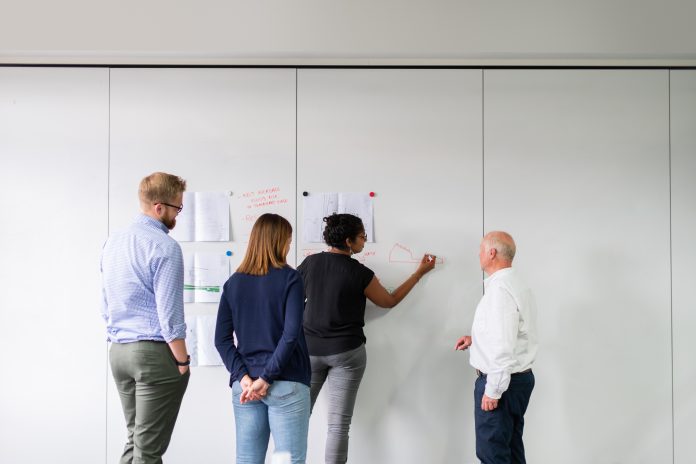Do your infrastructure projects embed sustainability from the outset? Is it something you have struggled with in the past? What is your approach to sustainable design?
Professor Richard Fenner, of the Centre for Sustainable Development, University of Cambridge, reflects on these issues.
The importance of sustainable development is increasingly acknowledged and accepted throughout society, but we still need to identify tangible ways sustainability can be implemented in practice.
For the civil engineering and construction sectors, we must move beyond merely advocating change and develop specific responses to a range of pressing sustainability challenges.
These may be rooted in meeting the global Sustainable Development Goals or in urgent actions driven by the climate change emergency, for example.
How can the industry deliver sustainable design?
Thinking about sustainable design is about asking the right questions at the right time. Here is a list of examples you can consider:
1. How has the engineering process shown respect for people and the environment?
2. Has an extended range of options been examined? Have these been documented and if so, how?
3. How is careful and informed material selection ensured and over-specification avoided?
4. How does the project create broader social wellbeing benefits, not just serving narrow economic goals?
5. Given the long asset lives of the built environment, how does the project respond to delivering short-term needs fairly while not exacerbating risks linked to accepted long-term environmental trends?
6. How can the project meet those short-term needs with low- or no-regret solutions, with net zero CO2 emissions, no biodiversity loss and minimum resource depletion?
Answers to such questions – asked at the right time – will allow more creative and sustainable solutions to emerge.
At the very least, even if they do not change the project scope, specifications or procurement, the above questions contribute to a more explicit set of answers to a stakeholder’s question: How sustainable is this project?
Quite often, we find that project teams bypass some of these critical questions. It is also the case that different individuals have different ideas of what sustainable design truly means.
Referring to these reliable questions can ensure projects are considered from a sustainability perspective from the very beginning. They also provide a structure against which to evaluate a project’s sustainable progress.
We must develop a clear future vision as to what a sustainable solution could be. We can then use this to guide the decisions needed to reach that solution.
Want to learn more?
Delivering Sustainable Infrastructure: Theory & Practice for Construction is an eight-week online course from the University of Cambridge that will empower you with the tools and knowledge needed to design sustainable plans, engage with and influence stakeholders, and drive sustainability forwards.
Using case studies, tools and methodologies, we provide insights and practical guidance to support engineering decision-making in everyday practice – from planning to design construction, operation and maintenance.
You’ll explore opportunities for multi-functional infrastructure solutions and discover their potential for delivering critical infrastructure services in truly sustainable ways. We challenge traditional approaches and outdated design standards and implement a systems-thinking approach to infrastructure provision.
This course equals 80 hours of CPD time.
Recent leader feedback
“I enjoyed reading about the different topics and how the course was set out, particularly the case studies, the academic reading, videos and listening exercises (a diverse range of media used). I also enjoyed the discussion points and live sessions…I have acquired a more systems approach in the sustainable application and achieving a wide range of sustainable benefits from a project,” said Thomas Dunn, infrastructure carbon manager for sustainability and the corporate Environment for Transport for London
“I understand the importance of leverage points to achieve outcomes at different stages of the project lifecycle and particularly at the early planning stages, where big decisions are being made, and boundaries are being set. I have increased my knowledge of environmental frameworks and areas that I was less familiar with, such as biodiversity and climate adaptation.”
Thomas Dunn Infrastructure Carbon Manager, Sustainability and Corporate Environment, Transport for London.
Why choose an online course from the University of Cambridge?
Our online courses bring together the academic strength and expertise of the university and the publishing and assessment strengths of Cambridge University Press & Assessment.
Designed and developed with the latest in learning theory and technology, each course reflects the Cambridge experience and values, including low student-to-tutor ratios and academically rigorous standards.
Courses offer rich interaction between learners and the experts at Cambridge, with weekly live sessions and multiple opportunities for interaction and collaboration with course leads, tutors and with fellow learners from a wide variety of industries and backgrounds.
You will benefit from:
- Courses designed and led by University of Cambridge experts.
- Weekly live sessions (all recorded).
- Hands-on tutor support.
- Flexible learning to complement a busy
- Working professional’s schedule.
- Access to the course weeks after completion.
Upon successful completion of the programme, you will receive a Certificate of Achievement from the University of Cambridge.
Find out more at cambridge.org/dsi-course
Cambridge Advance Online Cambridge University Press & Assessment
Tel: (UK) +44 1223 609985 or (US) +1 332-233-8085
*Please note: This is a commercial profile.

















